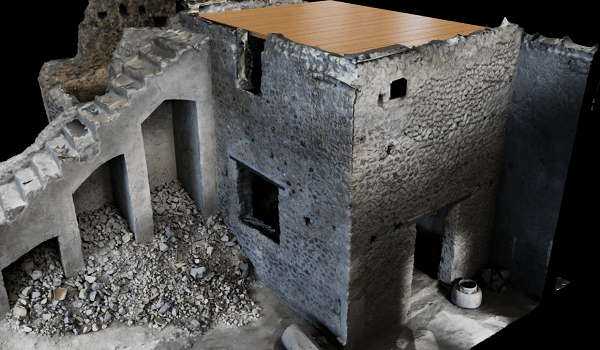Pompeii, a domus with a tower? A hypothesis based on “digital archaeology” developed by the Park and the Humboldt University of Berlin: the models are thought to be the villas of the super-rich
The article providing an in-depth analysis was published today in the e-journal of the Pompeii excavations.
They didn’t reach the levels of medieval cities such as Bologna or San Giminiano, but at Pompeii too the large residences of emerging families could have towers, the symbols of the power and wealth of the local elite. This is the hypothesis put forward in a new article entitled “La torre della casa del Tiaso. Un nuovo progetto di ricerca per la documentazione e la ricostruzione digitale della Pompei ‘perduta’” (The tower of the House of Thiasus. A new research project for recording and digital reconstruction of the ‘lost’ part of Pompeii”, published today in the e-journal of the Pompeii excavations https://pompeiisites.org/e-journal-degli-scavi-di-pompei/ .
The research is part of a “digital archaeology” project aimed at reconstructing the upper floors of buildings in Pompeii, which have often been lost. In this specific case, the archaeologists led by the Park Director Gabriel Zuchtriegel and Prof. Susanne Muth of the Department of Classical Archaeology of the Humboldt University of Berlin (Winckelmann-Institut) in conjunction with the Archaeological Park of Pompeii, were inspired by a monumental staircase in the Casa del Tiaso (House of Thiasus) which appeared to lead nowhere.
This prompted the hypothesis that the staircase led to a tower to observe the city and the bay, but also the night sky, as is attested both in the literary sources (such as the tower of Maecenas from where Nero is supposed to have watched Rome burn), and in art. Indeed, many Pompeian paintings of villas depict towers as an architectural feature. In their turn, the villas became the model for the urban residences of the local elite.
“Archaeological research at Pompeii is extremely complex. As well as research carried out in the field with excavations that reveal well-preserved contexts providing insights into life in antiquity and new stories about the tragic eruption, another approach involves non-invasive research, based on studies and hypothetical reconstructions of what has not been preserved, but which adds to our knowledge of the site”, says Gabriel Zuchtriegel, the Park Director.
The article published today in the E-journal presents the first results of a non-invasive research project entitled POMPEII RESET. It is aimed at using digital techniques in order to record, in the first phase, what has been preserved of the buildings in the form of a 3D model and, in a second phase, to reconstruct what has been lost on the basis of a digital twin and with the aid of digital reconstruction and virtual simulation.
“In particular, ‘Lost Pompeii’ consists of the upper floors of buildings which are essential to understanding life in the ancient city. By putting together the data in the form of a 3D digital model, we can develop hypothetical reconstructions that help us to understand the experience, the spaces and the society of the time.”
The project uses state-of-the-art technologies of digital recording and virtual reconstruction which open up new possibilities for research, the preservation of monuments and the transmission of knowledge in the field of archaeology. On the basis of detailed digital scanning of preserved architectural spaces, what has been lost can be reconstructed digitally, making it possible to understand the architectural complex as a space for living inhabited by individuals in antiquity. The House of Thiasus in Insula 10 of Regio IX is an extremely interesting case study, since the recent excavations organised by the Archaeological Park of Pompeii have provided a wealth of new data which has been analysed by the international research team as part of the POMPEII RESET project, involving, besides the Park’s staff, numerous researchers and students from the Humboldt University of Berlin.


